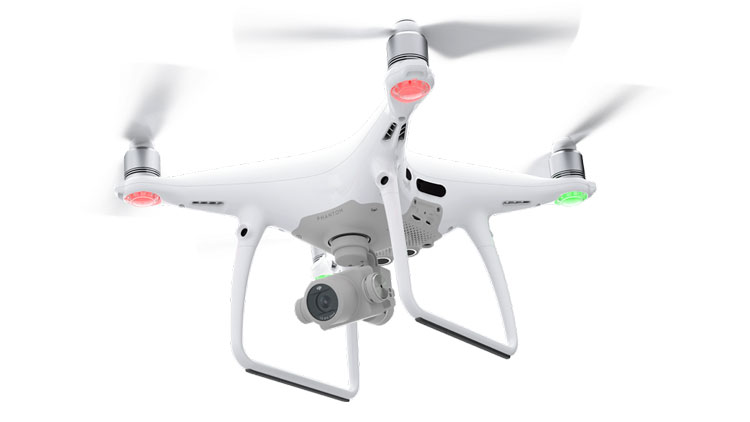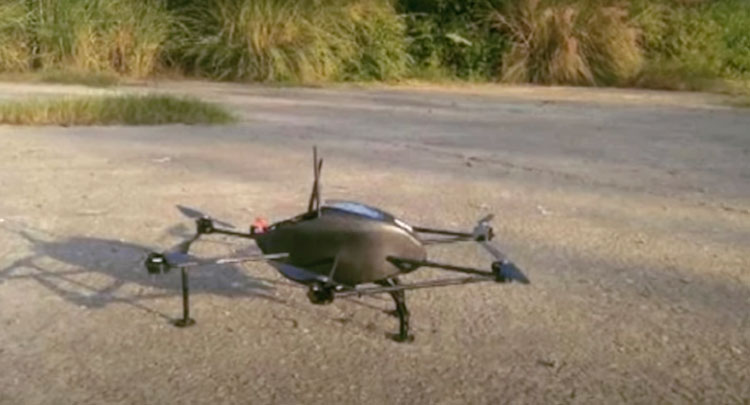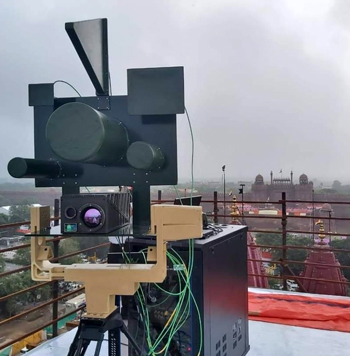INDIAN ARMED FORCES CHIEFS ON
OUR RELENTLESS AND FOCUSED PUBLISHING EFFORTS

SP Guide Publications puts forth a well compiled articulation of issues, pursuits and accomplishments of the Indian Army, over the years

I am confident that SP Guide Publications would continue to inform, inspire and influence.

My compliments to SP Guide Publications for informative and credible reportage on contemporary aerospace issues over the past six decades.
Jammu Drone Attack is Wakeup Call
Drone threat is not merely cross-border but equally potent from the hinterland. Therefore, merely deploying drone defence dome systems along the borders will not be enough.
 |
The Author is Former Director General of Information Systems and A Special Forces Veteran, Indian Army |

The weaponised drone attack on technical area of the Indian Air Force (IAF) base at Jammu in early hours of the morning of June 27 had signatures of Pakistan's ISI although it is not being talked in clear terms. The Lashkar-e-Taiba (LeT) or its affiliates, who have been behind most terrorist attacks in Jammu and Kashmir (J&K) lack the expertise to launch, control and accurately guide the drone to its target. Moreover, the explosive used in the instant case was TNT used by militaries and the outer case was akin to that made in an ordnance factory.
All this points out that given the technical requirements of the two drones carrying about two kg of TNT and penetrating into Indian Territory about 15-16 km, the attack was planned and executed by China-Pakistan or proxies trained by them. No helicopters suffered damage in the drone attack. The roof of a building was damaged and two IAF personnel were injured but future attacks could see more damage. It is perhaps our unpreparedness that later led Pakistan to fly a drone over the Indian High Commission in Islamabad to cock a snook at us.
The possibility of use of weaponised drones for terrorist activities against strategic and commercial assets calls for serious attention by the global community
Speaking at the 'Global scourge of terrorism: assessment of current threats and emerging trends for the new decade' at the United Nations General Assembly (UNGA) on June 28, V.S.K. Kaumudi, Special Secretary (Internal Security), Government of India said that the possibility of the use of weaponised drones for terrorist activities against strategic and commercial assets calls for serious attention by the global community. However, the UN ironically has not been able to do much against terrorism and terror supporting countries and weaponised drones have been on the scene for many years.

Pakistan has been using drones to deliver weapons and equipment to terrorists in J&K and Punjab over past two years. According to official figure our security forces sighted 167 drones from Pakistan in 2019 including 77 in September 2019. In the same month, Punjab Police seized an arms consignment including AK-47 rifles and Chinese pistols dropped by a Pakistani drone. The seizure helped in busting a terror module, which was receiving supplies from Pakistan. Most significantly, the Maoists have been using drones in Chhattisgarh since 2019 albeit for surveillance. This does not mean they will not use weaponised drones in the near future given their links with the ISI.
Compared to larger unmanned aerial vehicles (UAVs), small drones are much more difficult to detect as they need little space to take off Military and civil installations, sensitive locations, important events as well as large gathering are ideal targets for weaponised drones
Terrorist organisations like Al Qaeda, ISIS, Hamas, Hezbollah and Afghan Taliban have all been using weaponised drones for undertaking attacks. Houthis have used swarm drones to attack Saudi Arabia's Aramco oil facilities twice. Using Turkish drones, Azerbaijan played merry hell into Armenia in the recent conflict over Nagorno-Karabakh. The Jammu attack was the first instant of terrorists using weaponised drones in India but more can be expected in future. On subsequent days, drones were also observed in the vicinity of Ratnuchak/Kaluchak/Sunjwan military areas, which were engaged by small arms but could not be brought down.
Terrorists can use drones for surveillance and monitoring, jamming communications, as cyber-copters, communication relay, spraying virus or gas from single or multiple drones, bomb or kamikaze attacks, downing aircraft, swarm attacks and even assassinations. On July 14, 2018, 10 Chinese DJI Phantom 4 PRO drones were seized from a passenger at Bengaluru International airport. These drones have the capability to fly at 6,000 metres with half kg payload, are difficult to detect, can live-stream hi-definition images and have 'Tap-by-Use' feature which enables the drone to lock-on and track an individual in a crowd.

Compared to larger unmanned aerial vehicles (UAVs), small drones are much more difficult to detect as they need little space to take off. Along with detection, intercepting and bringing down a terror drone without activation its lethal load is essential. Terrorists, especially the state sponsored ones, are looking at new methods assisted by technology to strike us. Military and civil installations, sensitive locations, important events as well as large gathering are ideal targets for weaponised drones.
DRDO has said its counter-drone technology could provide the Armed Forces with a capability to swiftly detect, intercept and destroy small drones; giving both soft kill and hard kill options - first jamming the hostile drone and second using a laser-based kill system. DRDO's anti-drone system was deployed to cover the visit of US President Donald Trump to Gujarat in February 2020 including his road move from the airport to the Motera Stadium for the 'Namaste Trump' event.
DRDO has said its counter-drone technology could provide the Armed Forces with a capability to swiftly detect, intercept and destroy small drones
But multiple issues need to be examined in context of weaponised mini-drones, like: military is not the only target for drone attacks by terrorist; what is DRDO's production capacity for anti-drone systems to meet the overall national requirements, and; has any threat assessment and prioritisation of terrorist targets using weaponised drones been done.

Indigenous firm Grene Robotics has developed a drone defence dome system 'Indrajaal' capable of autonomously protecting an area of 1000 x 2000 sq km against threats such as UAV's, incoming weapons, loitering munitions, and Low-RCS targets. The firm has issued a statement saying, “Point defence ANTI-UAV systems will not be able to counter and protect large defence bases, NCR and linear infrastructures like international borders and such sensitive areas against increasingly modernising threats such as the PLA, which is already toying with advanced weaponry. A minimum of 300 systems are required to be deployed to protect the entire western border and this is financially not a viable option. On the contrary, 6-7 sectorally deployed Indrajaal systems with their seamless connectivity can protect the entire western border.
But it is important to acknowledge that the drone threat is not merely cross-border but equally potent from the hinterland. Therefore, merely deploying drone defence dome systems along the borders will not serve the purpose. Adani Land Defence Systems and Technologies are also to develop anti-drone systems but no details have been made available. Therefore, the requirement also is to provide portable anti-drone systems and anti-drone rifles to the military and police forces to counter mini-drones, as China has done.
Ironically, the DRDO has done little towards providing portable anti-drone systems and anti-drone rifles to the security sector. Even the 'Bharat' drones were provided to troops in Ladakh by the DRDO only 'after' the Chinese aggression in 2020. Countering drones is operationally feasible by undertaking comprehensive measures and use of technology that is available off the shelf immediately, which should then be mass produced on the go as a national effort, not depending merely on the DRDO.





